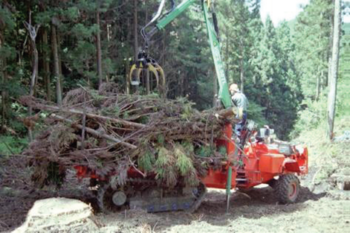Collecting technologies and methods of forest harvesting residues
The review article is available here
Tree felling and processing for timber or pulpwood can create harvesting residues including leaves and twigs (needles), cones, barks, and branches with diameter larger than 3 cm. Collecting forest harvesting residues can create suitable source for bioenergy, biochar and biofuel production, reduce fire risk due to reduction on fuel load, improve site establishment and planting phases, reduce the beetle attack hazard and create further entrepreneurial opportunities. The collection of forest harvesting residues requires application of suitable machines and working methods. It can be operated as a separate harvesting activity to the conventional sawlog and pulpwood recovery or can be integrated with the conventional sawlog and pulpwood recovery called “integrated biomass recovery”.
This article, which was published in the Journal Silva Balcanica and developed in the frame of IEA Bioenergy Task 43 (biomass supply), reviews research reports/articles published in the last five years (from 2017 to 2022) to collect the latest information on supply chain management methods of forest harvesting residue recovery. Information was collected from case studies in Canada, USA, Japan, Austria, Czech Republic, Romania, Sweden, Australia and New Zealand.
Popular methods for residue collection are chipping residues at roadside/landing and integrated biomass recovery. Harvesting residues are one of the promising sources for bioenergy production, but it requires developing efficient and low-cost harvesting systems. Latest research findings indicate that piling harvesting residues by a harvester-processor can improve the collecting productivity by the forwarder within cut-to-length harvesting operations. Integrating residue biomass recovery with conventional timber supply can reduce the total supply chain cost. Researchers also recommend applying more climate-friendly technologies and focusing on developing new machines with lower fuel consumption and subsequent emissions.
Future studies can focus on the following subjects: a) to determine the productivity and cost rates of various residue recovery systems, b) to develop and test technologies with lower fuel consumption rates and c) to find innovative solutions to utilize thinning materials and best practices to store and process biomass materials.

Figure: Extracting harvesting residues by a mini forwarder in Japan (Yoshioka, 2020).
Citation: Ghaffariyan MR (2023) Short review of collecting technologies and methods in forest harvesting residues recovery. Silva Balcanica 24(1): 55-68.


